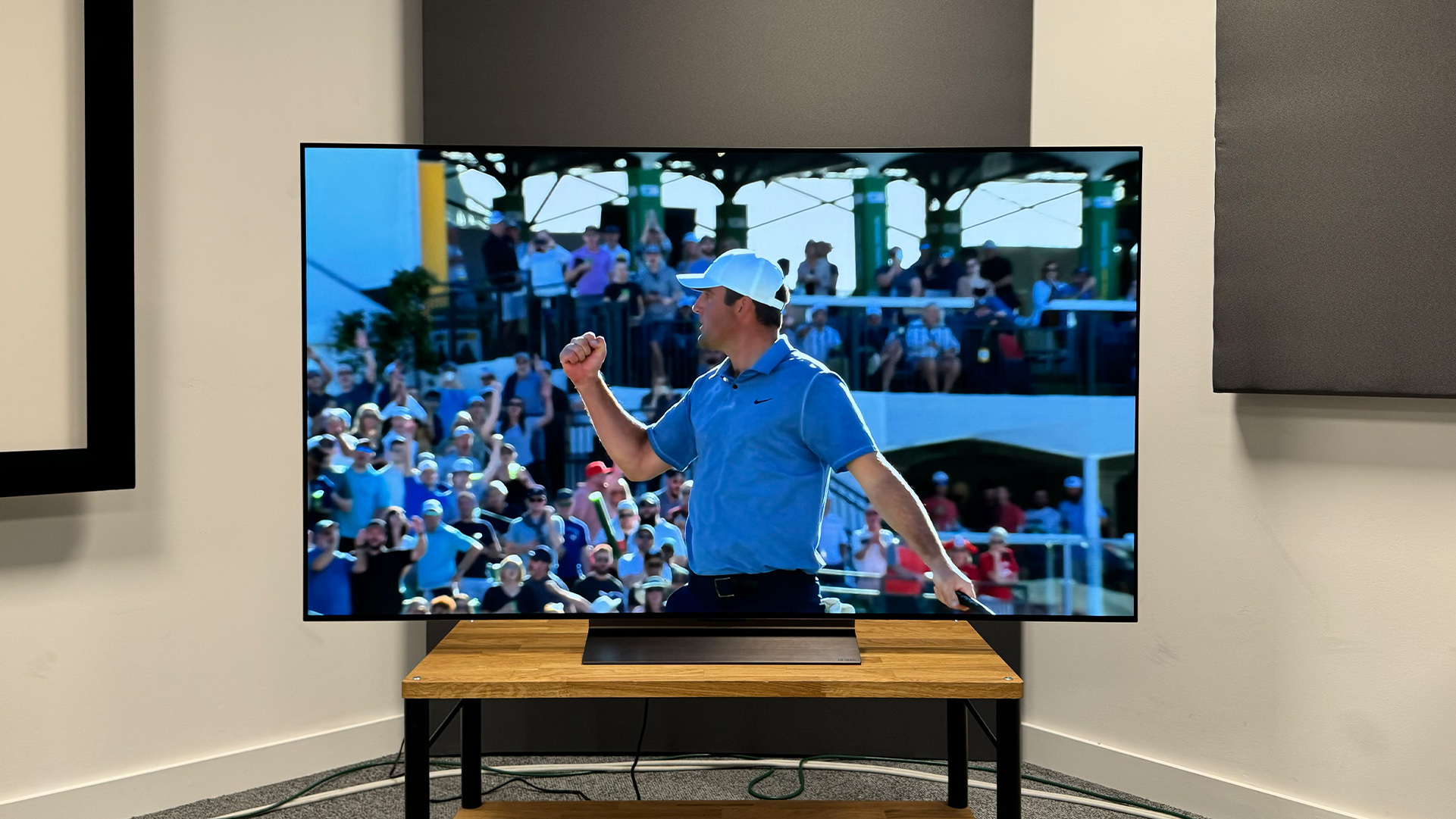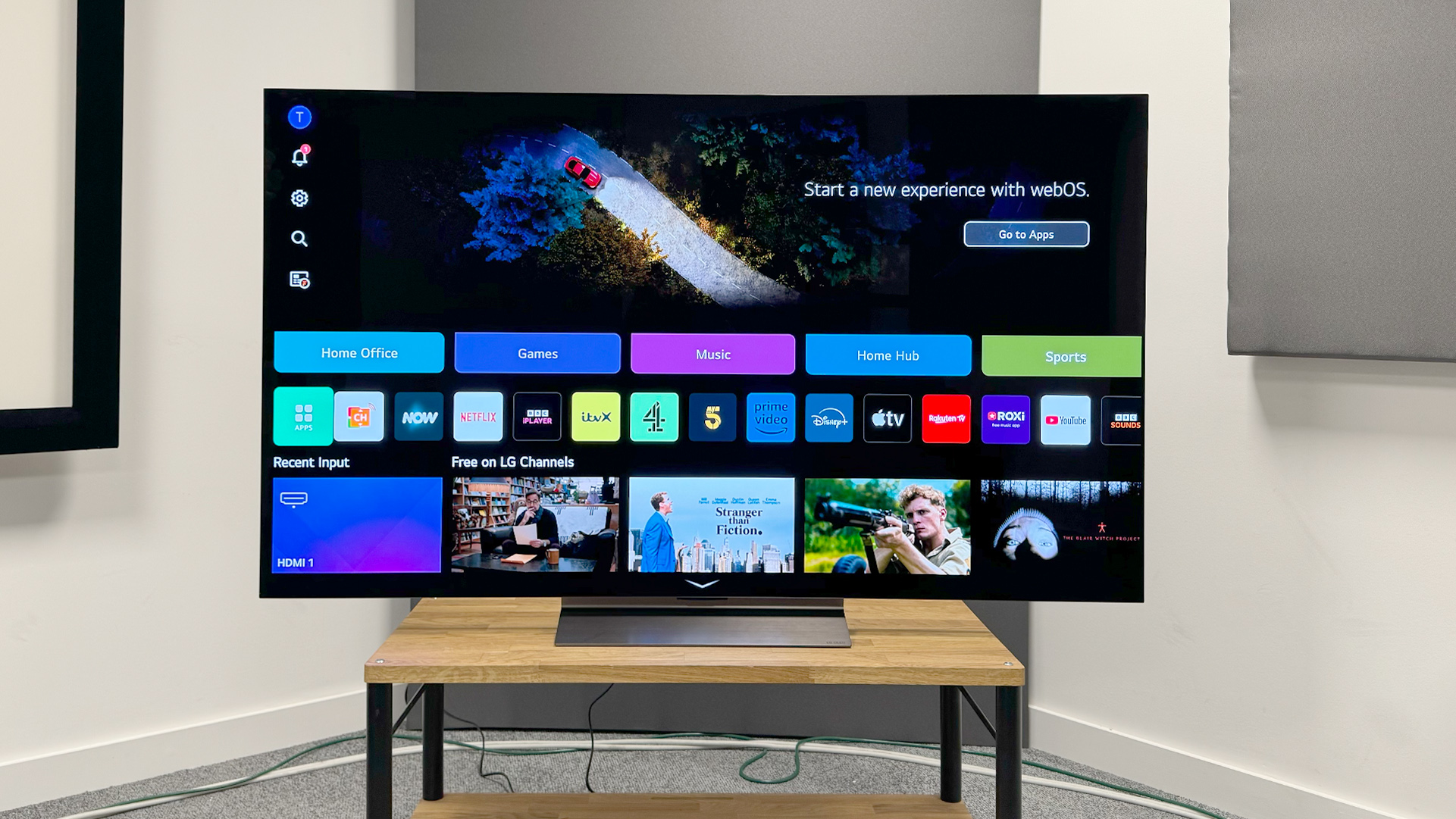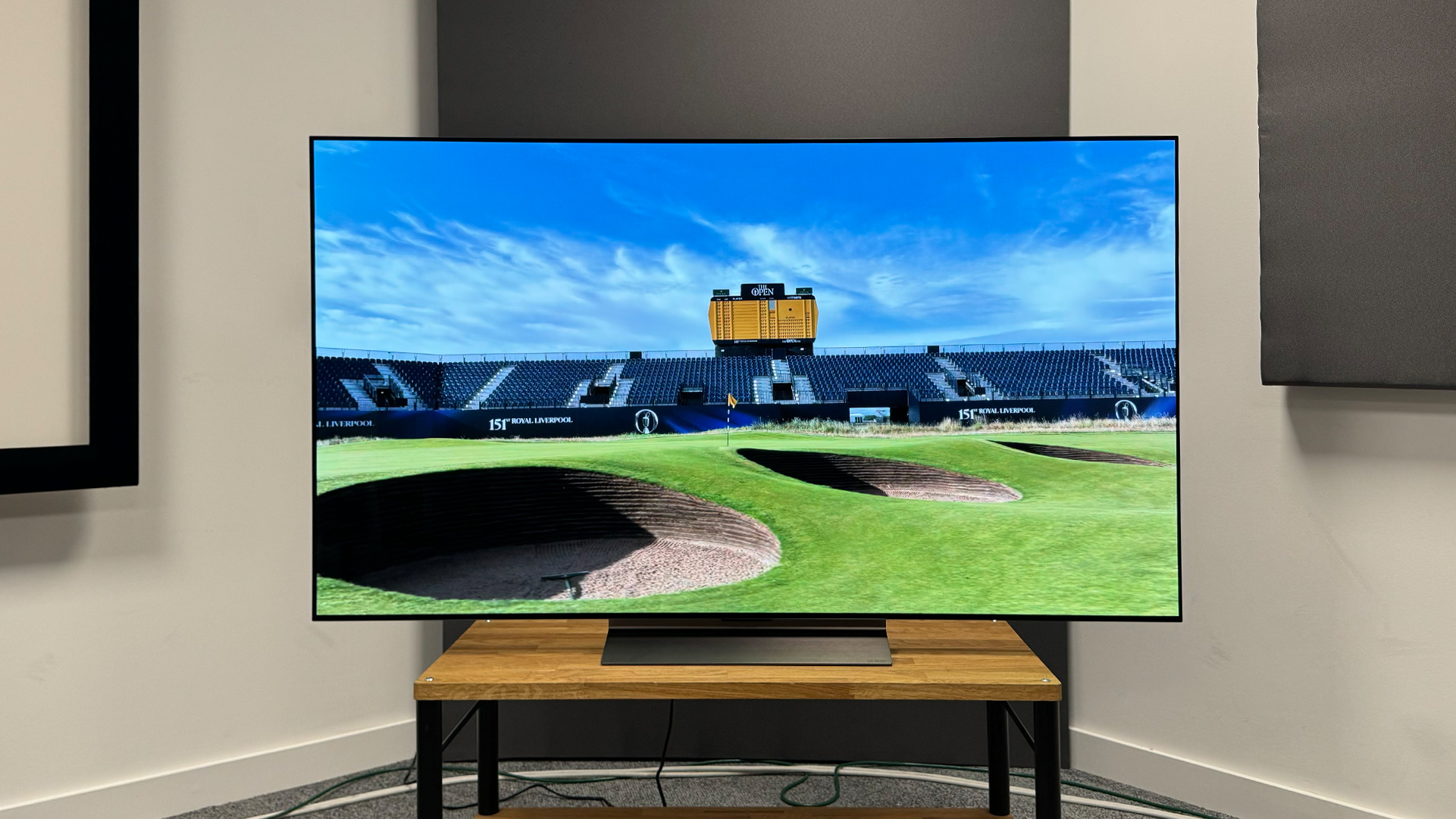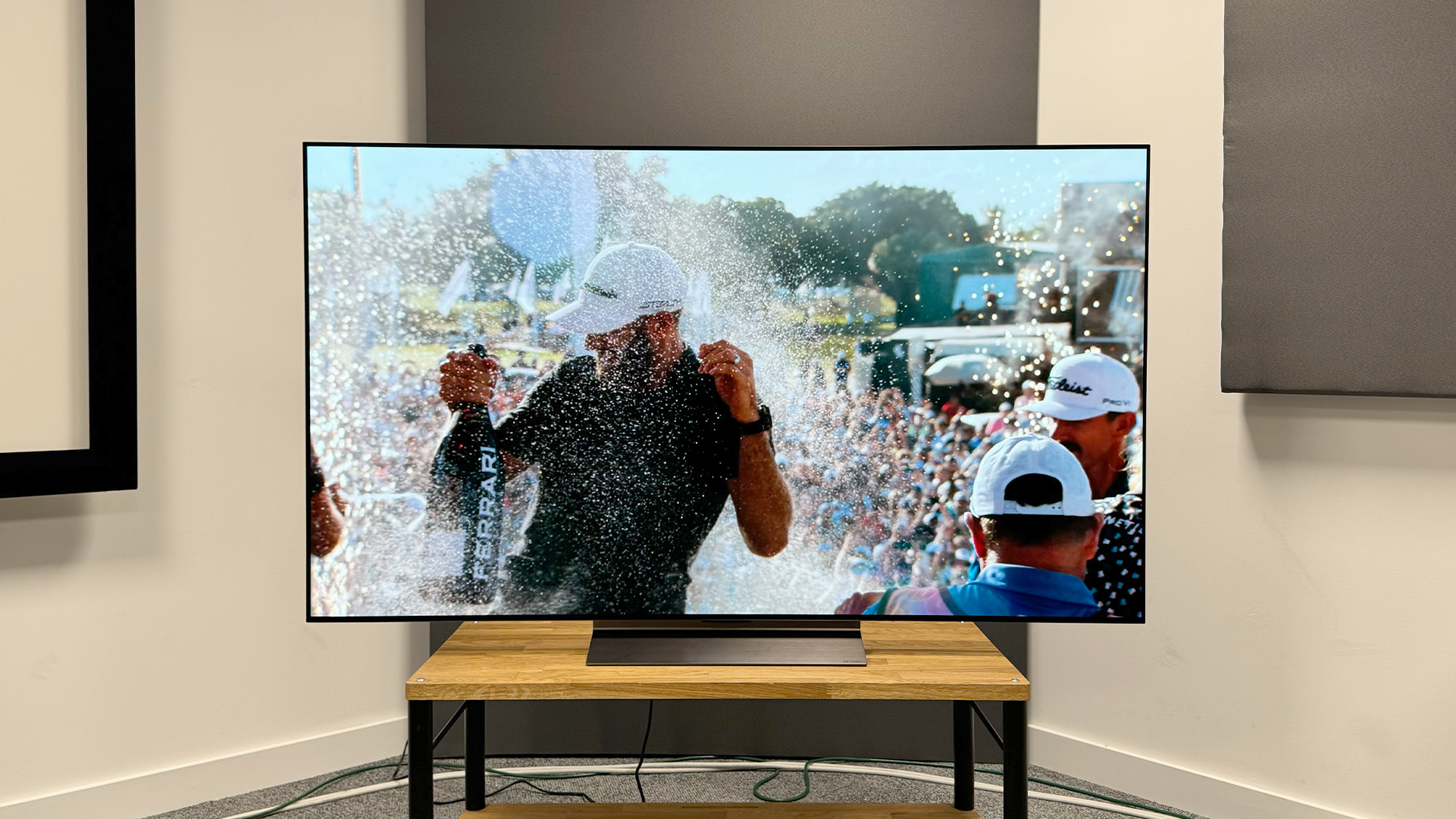
LG OLEDs are consistently among some of the most impressive TVs every year, so news of the next generation of sets is always an exciting part of the CES show every January. This week at CES 2024, right on cue, the LG OLED TV lineup for 2024 has been announced, with the B4 and next-model-up C4 the most accessible of the lot. These succeed last year's B3 and Award-winning C3 respectively.
So, the question arises: will the new entry-level B4 be enough of a TV, or should you start saving for the mid-range C4?
It's a particularly interesting head-to-head this year. The B4 has received some key upgrades over last year's B3 that make this entry-level OLED model feel less entry-level than before, while the C4 is perhaps further away from the next-model-up G4 than the two models have ever been.
Now we've had the C4 in for a full review (and thoroughly impressed we were too) we've added a bit more context here, but until we've had some proper time with B4, just be aware that the comparisons remain somewhat speculative.
- Everything you need to know about LG's 2024 OLED TV range
LG B4 vs C4: price

As you'd expect, the pricing for the B4 is lower than the C4, and it isn't available in as many sizes – and even fewer if you're buying in Australia.
For UK and Australian buyers, both sets are cheaper than their predecessors launched at, while US buyers see a small uplift in pricing on the C4, but the B4 remains around the same.
LG B4 vs C4: specs

The biggest difference between the two models comes down to the C4's Evo panel, a superior Alpha 9 processor, and a bump up to a 144Hz refresh rate.
The B4 offers four full bandwidth HDMI 2.1 sockets for 4K/120Hz gaming, compared to the two HDMI 2.1 ports on last year's B3. The C4 also packs in four HDMI 2.1 ports, sticking with the same number as last year's C3.
The B4 gets an Alpha 8 processor, while the C4 gets an upgraded version of the Alpha 9 processor that featured in the C3. When it comes to AI enhancement performance, the C4's Alpha 9 looks to offer some advantages over the B4's Alpha 8, such as AI Sound Pro, which can process virtual 11.1.2 surround upmixing.
As with the B3, the panel on the B4 isn't a next-gen OLED Evo. The C4's is, however, which produces a brighter, more vibrant picture. This and the difference in processor should see the C4 produce a superior picture.
Elsewhere, the B4 offers a 120Hz refresh rate compared to the C4's 144Hz refresh rate, though both models support important gaming features like VRR and ALLM. Both have the latest version of LG's webOS 24 operating system as well as built-in Chromecast.
There's no doubt the C4 has more impressive specs, which certainly play out in reality too. It's precisely what you'd expect from the next model up over the B4, but the gap between these two TVs is by no means gigantic. How those differences translate in practice and how wide the gap is between their RRPs will determine which proves the better value TV.
We'll be able to make that call a little easier once we've reviewed the B4 in full, but if your budget will stretch to the C4, we don't think you'll be disappointed.
LG B4 vs C4: picture

While we haven't been able to compare these two TVs directly, we can say fairly confidently – with its brighter panel and more capable processor – that we think the C4 will be the better all-round performer. Just how much of a margin there is in it – well, that remains the biggest question.
Certainly, in isolation, the performance of the C4 is promising indeed, particularly considering the steps forward it makes on last year's C3. Even in bright conditions, colours are rich and pack plenty of punch, detail retrieval is top notch and the image is overall sharper and better defined than the C3 – turn the lights down and this only get more clear.
This could be where the C4 has the edge over the B4, considering their panel differences – we noted it was "certainly brighter" than the B4 during our initial first impressions in March. That means dark room viewing will likely be where the B4 thrives, though we still didn't think it was a bad performer in ambient light.
Direct sunlight could be more of a challenge, but we felt it still could be "sufficiently bright for most people and conditions." We'll have to wait until we can compare them head to head to know for sure.
LG B4 vs C4: sound

As mentioned above, the Alpha 9 chip in the C4 enables AI Sound Pro to upmix audio into more virtual channels and optimise it depending on the content being played, which – theoretically – offers an advantage over the B4.
We were a little sceptical in practice as we haven't been too impressed with AI Sound in the past, but the C4 does actually sound much, much better than last year – despite the actual hardware being seemingly identical.
It's rich, weighty, punchy and dynamic, and will go loud, while also getting rid of the aggressive sharpness of last year’s AI Sound mode.
If that's the case with the C4, the B4 may be on the receiving end of similar refinement to its AI Sound mode, though its on-paper specs of 40W vs 20W suggest it might not go so loud or sound quite so big.
LG B4 vs C4: early verdict

If you're wondering which TV will offer the best performance, the likelihood is that it'll be the C4. The B4 is the entry-level model of LG's OLED range, after all, and therefore sensibly goes without some of the C4's features that easily make it a five-star performer.
The key component here, however, is price. And how much of a factor that is depends on where you live.
In the UK you'll save around £200 between the two, in the US around $400-500, and in Australia, around AU$800-1000. Until we get to see the B4 it's a hard call as to whether those savings make the B4 the best value, or if you're better off saving up a little longer for the improvements in the C4.
At this stage, we feel confident to say that if you're viewing in a bright room, then the C4 may well have the edge, but there might not be a whole lot in it. Until we've reviewed the B4 and had chance to really compare them, go for whichever TV fits your budget. If you can stretch to the C4, we don't think you'll be disappointed.
MORE:
Read our full LG C4 review
And our first impressions of the LG B4
And check out our rundown of the best LG TVs
LG 2024 OLED TV range: everything you need to know







